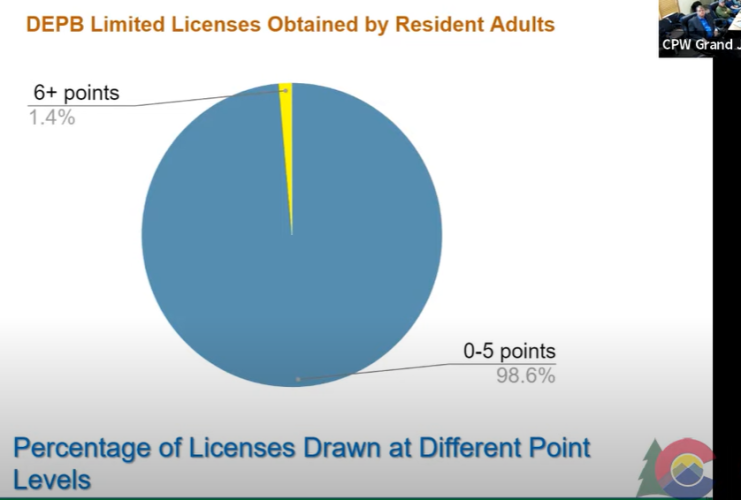BrokenArrow
Active member
I have been a hunting and whitewater guide for many years.
Whitewater in ‘96
Hunting in ‘05
I don't practice those since 2 years ago, except I guide/ free hand/camp Jack a hunting season or two since it’s hard for my friends to find guides to hire nowadays.
The point being, there was a waitlist system (basically a Preference Point system) to raft the Grand Canyon years ago that anyone could put in and wait times became 25+ years before you would be awarded a permit to privately raft the Grand Canyon. They basically gave you a number, like at the DMV, and you waited until called.
They changed the system to max of 5 points for any applicant. I have now had 3 personal private trips I have led in 3/5’s the time of waiting for my number for ONE trip on the old waitlist system - aka a pure preference point system.
I know GC and CO hunting conditions are not the same.
But if we capped PP at 5 for all new applicants or for applicants who burned their previous accrued PP on a hunt they wanted, then everyone would start at 0 and only be able to accrue a max of 5 PP.
This would:
- act as a preference/hybrid draw.
- give “bonus/preference” to max point holders until they cash out (same as M,S,G now), and grandfather their current point total per species in, but not allow them to accrue any higher points in upcoming draw years.
- even the playing field at 5 points max per application participant if they are starting from scratch (0), or after being awarded a tag if this system were adopted.
- reduce ridiculous and unattainable point creep.
- keep applicant’s engaged, spending money, and hopeful.
- I believe, allow more flexibility to alter the draw regulations and tag allocations compared to the ideas I’ve heard in recent years. B/c it just eventually eliminates the variable of PP in those discussions. (Think of NM or ID)
- *One caveat would be you burn your points when drawn. Only serious reasons for reinstating points.*
I like this idea because it allows point holders to keep what they’ve “earned” and try to cash those in while giving a chance to new applicants.
- remember 98.6% of applicants are between 0-5 points.
Thoughts????
I’m here to bounce ideas, learn, and try to find a solution.

Whitewater in ‘96
Hunting in ‘05
I don't practice those since 2 years ago, except I guide/ free hand/camp Jack a hunting season or two since it’s hard for my friends to find guides to hire nowadays.
The point being, there was a waitlist system (basically a Preference Point system) to raft the Grand Canyon years ago that anyone could put in and wait times became 25+ years before you would be awarded a permit to privately raft the Grand Canyon. They basically gave you a number, like at the DMV, and you waited until called.
They changed the system to max of 5 points for any applicant. I have now had 3 personal private trips I have led in 3/5’s the time of waiting for my number for ONE trip on the old waitlist system - aka a pure preference point system.
I know GC and CO hunting conditions are not the same.
But if we capped PP at 5 for all new applicants or for applicants who burned their previous accrued PP on a hunt they wanted, then everyone would start at 0 and only be able to accrue a max of 5 PP.
This would:
- act as a preference/hybrid draw.
- give “bonus/preference” to max point holders until they cash out (same as M,S,G now), and grandfather their current point total per species in, but not allow them to accrue any higher points in upcoming draw years.
- even the playing field at 5 points max per application participant if they are starting from scratch (0), or after being awarded a tag if this system were adopted.
- reduce ridiculous and unattainable point creep.
- keep applicant’s engaged, spending money, and hopeful.
- I believe, allow more flexibility to alter the draw regulations and tag allocations compared to the ideas I’ve heard in recent years. B/c it just eventually eliminates the variable of PP in those discussions. (Think of NM or ID)
- *One caveat would be you burn your points when drawn. Only serious reasons for reinstating points.*
I like this idea because it allows point holders to keep what they’ve “earned” and try to cash those in while giving a chance to new applicants.
- remember 98.6% of applicants are between 0-5 points.
Thoughts????
I’m here to bounce ideas, learn, and try to find a solution.

Last edited:




